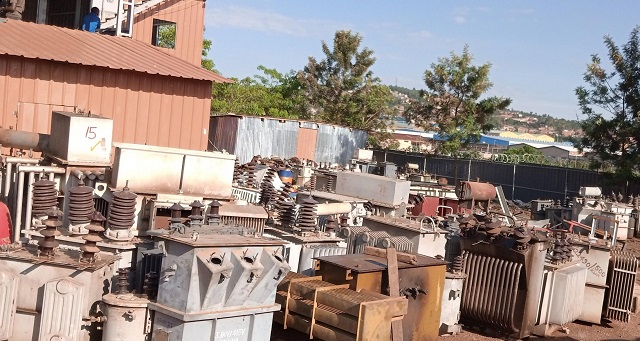
COMMENT | GUEST COLUMNIST | I watched a news report on TV on April 10, 2025 that left me with more questions than answers. In the report, Uganda Electricity Distribution Company Limited (UECDL) Managing Director Paul Mwesigwa (see video below) made several assertions and allegations that deserve a response.
He for example stated that, “by the time we (UEDCL) took over on the first (of April), load shedding, power instability was high. What we’ve done on the first day, and the last one week is to go into the network. Last week on Thursday, we issued out 113 transformers in the field which were out of action and restoration is ongoing…”
While the urgency and swift action are appreciated, such claims raise several questions of transparency, planning, and operational due diligence. Here below are my questions.
1. Was There a Strategic Transformer / Equipment Replacement Plan in Place?
It is expected, based on good governance and sound utility management practices, that UEDCL, knowing well in advance of its takeover date, would have developed a strategic plan for the scale of deployment such as the one it has performed — complete with:
- A series of planning meetings leading up to a kick-off meeting, all with documented minutes, planning the replacement and recovery of faulty transformers,
- An audit and criticality assessment plan of the network, at the very least, of the areas where the faulty transformers were located,
- Defined operational priorities for the recovery and replacement of faulty transformers,
- A resource deployment matrix (technical teams, logistics, test equipment, etc.) to execute the replacement and recovery of faulty transformers.
Given this, it is difficult to reconcile how a meaningful assessment of the grid could have been conducted, field audits completed, critical assets prioritized, and over 100 transformers issued and deployed—all within the span of 10 days (or less). A credible power system network audit and diagnostic process alone, even for the size of Uganda’s electricity distribution network, would reasonably require months, even with full operational resources at hand.
Question:
If such an assessment was not conducted beforehand, on what basis were transformers deployed and decisions made? If the assessments were conducted in advance, why was the public not informed earlier of the existing infrastructure backlog?
2. Was There a Budget for This Intervention Outside the Initial $50 Million earmarked for UEDCL’s investment needs? If there was a budget, against what plan was the budget made?
Deploying over 100 transformers in a matter of days implies significant unplanned expenditure. Clarity is needed on whether this cost:
- Falls within the original $50 million allocated for the seamless transfer of network operations,
- Was planned for in advance as part of a known infrastructure backlog.
Question:
Was this expenditure anticipated in the takeover agreement, or is it an unforeseen (and therefore very unfortunate) cost now potentially passed on to consumers via tariff increases?
3. Transparency Around Asset Backlog and Procurement
Were the 113 transformers a part of an undisclosed asset backlog inherited from UMEME? If so:
- Was this reflected in the buy-out agreement value?
- Has the public been billed twice—once in the UMEME buy-out package and again in operational costs?
- How big is the backlog? How many failed transformers did UEDCL inherit from UMEME?
Conversely, if these assets were from UEDCL’s own inventory:
- Why weren’t they pre-emptively deployed in anticipation of known issues?
- Why has urgency only emerged after assuming control?
Further, were proper root cause analyses (RCAs) performed before replacements? Without such analysis, UEDCL risks replacing rather than repairing transformers—incurring unnecessary costs and potentially repeating failures due to unaddressed systemic issues. These costs will also be passed on to customers via the tariff.
Question:
When and how will UEDCL publicly disclose RCA results and the locations of newly deployed transformers?
4. Operational Timeline and Deployment Feasibility
Considering all employment interviews, including those for technical teams, most notably the foot soldiers who would typically play a key role in identifying and replacing field equipment such as transformers, were still being carried out up to Sunday the 30th of March 2025:
- When were technical teams officially mobilized to accomplish the recovery and replacement of 113 transformers within a week after moving into their new positions in a different company?
- How were 113 transformers deployed, tested, and operationalized in just 10 days or less?
- Was middle management given time to review field reports, approve interventions, and authorize such significant spending?
The scale of deployment, if accurately reported, suggests either a backlog (which undermines the “swift response” narrative) or rushed replacements without proper evaluation.
Question:
Were faulty transformers simply discarded, or is there a plan to test and potentially refurbish units to minimize waste?
5. Need for Due Diligence and Fiscal Responsibility
UEDCL is now operating with public funds and under public scrutiny. As such, it must be held to the highest standards of transparency, planning, and fiscal discipline. Uganda cannot afford for critical infrastructure to be managed by guesswork or reactive decision-making especially since the consequential costs are passed on to customers via electricity tariffs.
This moment presents an opportunity for UEDCL to demonstrate its commitment to transparency, technical integrity, and strategic planning. The public deserves clear, fact-based communication and confidence that national infrastructure is being managed with care and competence.
I respectfully call on UEDCL to:
- Publish a breakdown of the 113 transformers deployed: locations, condition, and root cause of failure of transformer being replaced – knowing causes such as vandalism are better addressed with public support,
- Clarify if these were part of a known backlog and included in the takeover agreement and UMEME buyout value,
- Share its plan for conducting root cause analysis and managing asset failures,
- Provide a timeline of key actions taken before and after the April 1st handover, culminating in the replacement of over 100 transformers in 10 days.
Accountability is not a criticism — it is a call for excellence.
*****
The writer is an expert in electricity distribution
 The Independent Uganda: You get the Truth we Pay the Price
The Independent Uganda: You get the Truth we Pay the Price




I’m worried with everything just from the start.
I discovered Rot in the recruitment process of UEDCL.
Uganda will cry.
Thanks
The writer either didn’t read the UEDCL license application report or is pushing a certain narrative. UEDCL did an audit for the network before take over. Read the report first and it will answer most of your questions.